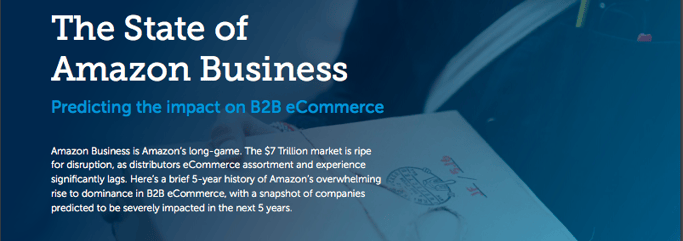When Amazon Business launched, it was hailed as a major threat to B2B distributors and a key strategic priority for Amazon’s growth. Within a year the marketplace had surpassed $1 billion in sales, and was reputed to be growing at 20% month over month.* Featuring hundreds of millions of products, bulk discounts and two day free shipping, Amazon Business literally meant business. Two years later, and with the rollout of their marketplace across some of the world’s most influential retail markets US, UK, Japan, India, and recently in France, we’re asking what’s the big deal about Amazon Business and is it all it’s cracked up to be?
The History of Amazon Business
Amazon Business is in its second generation. The platform originally launched in 2006 under the brand AmazonSupply, a marketplace focused on industrial products and office supplies. With more than 2.2m products and 2.25m registered users, AmazonSupply proved to be a lucrative investment. By 2014 Forbes was calling it ‘Jeff Bezos $8 trillion B2B bet’ and his most disruptive move.**
How good is Amazon Business ?
Fast forward a few years and there’s no doubt Amazon’s gamble into B2B has certainly hit the jackpot. Amazon Business offers the same convenience, speed and customer experience as their core B2C proposition. They promote free shipping for prime members and have become the top search engine for product enquiries (ahead of Google). Additional features include VAT-free pricing, VAT invoices and tracking spend limits. As price transparency and competitiveness have emerged as central features for consumer purchasing, professional buyers are starting to seek that transparency as well. This is a fundamental shift for B2B sellers - Amazon is starting to eradicate the lack of pricing transparency in B2B sales. A valid question is starting to emerge: Will Amazon end B2B pricing games?
Yet, Amazon still has a long way to come to provide a best-in-class purchase experience for professional buyers. Many B2B specific features are missing such as split shipping, unified invoicing and so forth. In a nutshell, the customer experience is good, but the functional scope is limited meaning distributors and buyers are lacking a fully market-leading experience.
Is Amazon Business really a threat ?
This is a complex question. Certainly in the short-term, Amazon remains a threat for commoditized products such as office supplies, spare parts, cleaning products and storage solutions, therefore, the distributors most at risk of losing market share are automotive spare parts dealers, office supply specialists and those in these core categories. Furthermore, it’s only a matter of time before Amazon continues its mission to become a one-stop-shop by extending their offer to additional verticals and eventually complementary services, so in truth, no vertical is risk-free.
Amazon has the capacity to continue to invest substantial capital, as evidenced by their recent acquisition of Whole Foods, to enable them to get a foothold in the grocery food market. Amazon can easily leverage its brand awareness, website traffic and logistics capabilities to enter new markets at minimal costs and with reduced upfront investment in the B2B space, in consequence, their impact in B2B will be significantly faster than in B2C.
But B2B players still have competitive advantages to leverage...
Despite the challenging conditions posed by Amazon Business, B2B distributors and manufacturers have a number of tools in their armoury. Firstly, there is not a single, homogenous concept of B2B, there are many unique and varied verticals, each with specificities and needs. B2B companies can leverage specific expertise that Amazon does not have for the moment. This expertise and industry knowledge provide a true point of differentiation and should not be underestimated.
Secondly, developing a strategic axis provides a powerful tandem between the sales force and digital. Amazon does not have a sales force and will not invest in one. In fact, Jeff Bezos has announced he will reduce as much as possible overhead through algorithms and robots.
Finally, there is a true opportunity to offer best in class after-sales and customer service, nurturing the customer relationship provides lifetime loyalty and increases the "stickiness factor" for professionals.
Nevertheless, the danger is that B2B players will wait too long to act, and we know that winner takes all in the platform business, especially on both sides of the equation (i.e. recruiting Seller network and creating a Customer/Seller community), the threat might not even come from Amazon Business but by the direct competition in your vertical.
In Summary…
Now is the time to act by launching a digital and platform strategy in your vertical. B2B buyers expect it and Amazon Business will, whether you like it or not, continue to invest and influence your customers expectations. You have a powerful differentiation, and it’s time to use it.
Check out our infographic where we explore the verticals most impacted by Amazon Business and what you can do about it!
* https://www.applicoinc.com/blog/amazon-business-b2b-distributor/
** https://www.forbes.com/sites/clareoconnor/2014/05/07/amazons-wholesale-slaughter-jeff-bezos-8-trillion-b2b-bet/#6f9fa9715041
.jpeg?width=100&height=100&name=0%20(2).jpeg)
Written by Alfred Hawawini
Director of Business Development - B2B




